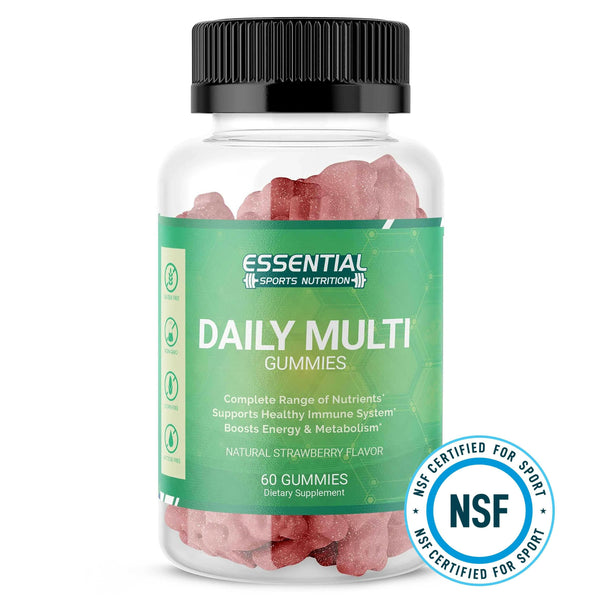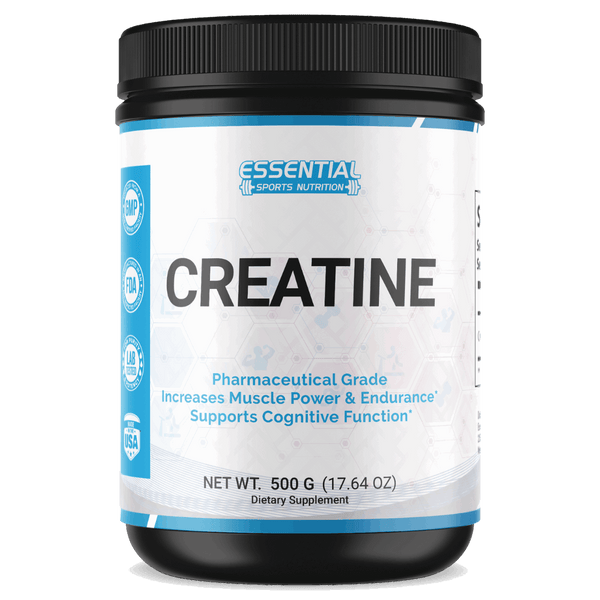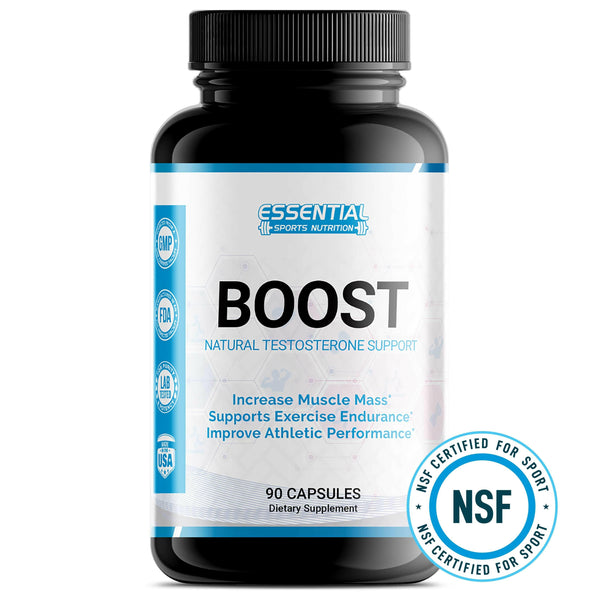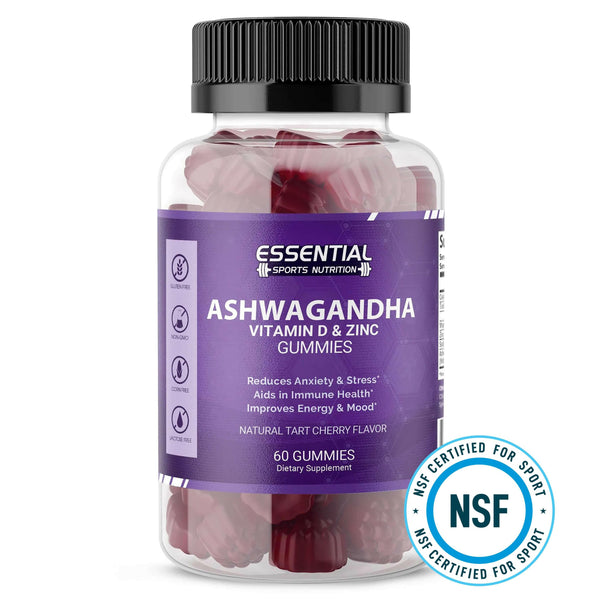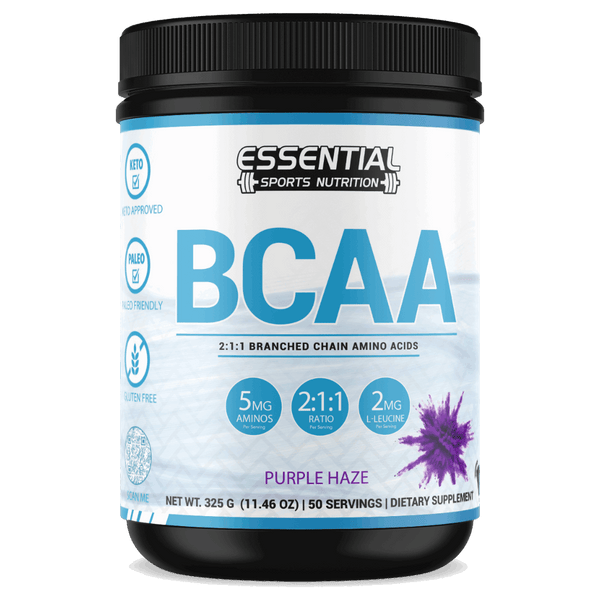Best Resistance Band Arm Workout: Exercises to Tone Your Upper Body
Boost your arm strength with resistance bands! Start with Seated Biceps Curls to target your biceps. Try Resistance Band Pull Aparts and Staggered Stance Rows to engage your back muscles. Enhance shoulder stability with Overhead Band Stretches and Single-Arm Front Raises. Don't forget your chest and triceps—incorporate Resistance Band Push-Outs and Tricep Kickbacks. Maintain proper stance and tension throughout each exercise. These workouts not only build muscle but improve posture and balance. Ready for a stronger, more functional you? There's more to discover on this fitness journey.

Key Takeaways
- Seated Biceps Curl effectively targets biceps with controlled movements.
- Tricep Kickback strengthens triceps by fully extending the arm backward.
- Resistance Band Push-Out engages chest, shoulders, and triceps with adjustable tension.
- Resistance Band Pull Apart targets upper back muscles and improves posture.
- Single-Arm Front Raise focuses on shoulder stability by raising the arm to shoulder height.
Seated Bicep Curl
To effectively target and strengthen your biceps, the Seated Biceps Curl with a resistance band is an excellent exercise. Start by sitting on a chair with good posture, making sure your back is straight and your feet are flat on the ground. Loop the resistance band under your feet and grip one end in each hand.
As you begin, ensure your arms are fully extended and your elbows are close to your sides. This position ensures that the focus remains on your biceps throughout the movement. Slowly curl your hands towards your shoulders, engaging your biceps and keeping your upper arm stationary. The key here is control—don't rush through the reps.
Performing 10-12 controlled reps of these bicep curls will effectively work your biceps muscles, helping to strengthen and tone your arms. Remember, maintaining proper form is essential. Keep your movements slow and steady to maximize the benefits and avoid injury.
Resistance Band Pull Apart

After effectively engaging your biceps with the Seated Biceps Curl, let's shift our focus to the Resistance Band Pull Apart, a powerhouse exercise for targeting your upper back muscles and improving posture. This exercise zeroes in on your rear deltoids and rhomboids, essential for shoulder blade retraction.
To perform a Resistance Band pull-apart, start by holding a resistance band in front of you at chest level with your arms straight. Make sure there's some initial tension in the band. Now, pull the band apart by squeezing your shoulder blades together, ensuring you maintain tension throughout the movement. This action not only strengthens your upper back but also enhances shoulder stability.
Maintaining proper posture is critical here. Stand tall, keep your core engaged, and avoid rounding your shoulders. By consistently incorporating this exercise into your routine, you'll see improvements in your posture and a reduction in upper-body muscle imbalances.
Overhead Resistance Band Stretch
Elevate your arm workout with the Overhead Band Stretch, a dynamic exercise designed to target your shoulders, triceps, and upper back muscles. This effective move isn't just about building strength; it also enhances shoulder mobility and flexibility, important for maintaining a healthy upper body.
To perform the Overhead Band Stretch, you'll need a resistance band. Start by standing with your feet shoulder-width apart, holding the band with both hands. Raise your arms overhead, ensuring the band is taut. Slowly stretch the band by pulling your hands apart, feeling the tension in your shoulders and upper back. Hold for a few seconds, then return to the starting position with control.
Here's a quick reference table to guide you:
| Step | Action | Tip |
|---|---|---|
| Start | Stand with feet shoulder-width apart | Maintain a neutral spine |
| Raise Arms | Lift arms overhead, holding the band taut | Keep elbows slightly bent |
| Stretch Band | Pull hands apart to stretch the band | Focus on controlled movement |
Including the Overhead Band Stretch in your routine not only strengthens your muscles but also boosts your shoulder mobility. Consistent practice will leave your upper body toned and flexible, ready to tackle any challenge.
Resistance Band Push-Out

Following the Overhead Band Stretch, let's power up your arm routine with the Resistance Band Push-Out, an exercise that zeroes in on your chest, shoulders, and triceps. It's a potent move that strengthens your pushing muscles and enhances your overall arm strength.
Here's how to master the Resistance Band Push-Out:
- Secure the resistance band around a sturdy anchor point behind you. Make sure it's at chest level.
- Grip the band handles with each hand, and take a step forward to create tension.
- With your feet shoulder-width apart and a slight bend in your knees, extend your arms straight out in front of you against the resistance.
This exercise can be adjusted by modifying the band's tension, making it perfect for various fitness levels. Remember to keep your core engaged and maintain a steady pace for maximum effectiveness.
- Form Check: Keep your back straight and shoulders down to avoid strain.
- Modification Tip: Move closer or further from the anchor point to adjust difficulty.
- Progression: Increase band tension gradually as you build strength.
Incorporating the Resistance Band Push-Out into your strength training routine will greatly enhance your arm exercises. Stay consistent, and you'll notice remarkable improvements in your upper body strength.
Resistance Band Back Press
Master the Resistance Band Back Press to strengthen your upper back and improve your posture. This exercise zeroes in on the back muscles, particularly the rhomboids and traps, which are essential for maintaining a strong and healthy spine. By effectively engaging these muscles, you'll not only enhance your posture but also build a more resilient upper back.
To execute the Resistance Band Back Press, start by securing the resistance band at shoulder height. Stand facing away from the anchor point, holding the band with both hands. With your arms extended forward at chest level, pull the band towards your chest, squeezing your shoulder blades together. Make sure your elbows are slightly bent and your movements are controlled. This will maximize engagement of the rhomboids and traps.
Adjust the tension of the band to increase the difficulty as you progress. Remember, maintaining proper form is essential—keep your back straight and avoid arching to prevent strain. Consistent practice of this exercise will lead to noticeable improvements in your posture and upper back strength. So, grab your resistance band and start mastering the Resistance Band Back Press today! Your back muscles will thank you.
Cuff Pivot

Engaging in the Cuff Pivot exercise is a surefire way to bolster your shoulder stability and upper back strength. This move specifically targets the rotator cuff muscles, which are essential for maintaining shoulder health and preventing injuries. You'll need a resistance band to perform this exercise effectively.
Here's how to do it:
- Hold the resistance band in front of you: Keep the band taut with both hands at shoulder width.
- Rotate your arms outward: Mimic a shoulder external rotation by moving your hands away from each other while keeping your elbows close to your sides.
- Focus on controlled movement: Engage your upper back muscles as you rotate to ensure stability and proper form.
This exercise is great for enhancing shoulder stability and fortifying the upper back. The Cuff Pivot is especially beneficial for those who have experienced shoulder issues or are looking to prevent them. Adding 10-12 reps of this move into your workout routine can make a significant difference.
Bow and Arrow Resistance Band Exercise
When performing the Bow and Arrow with resistance bands, focus on maintaining proper form to fully engage your lats and rhomboids. Start by anchoring the band at chest height and pulling back smoothly, mimicking the action of drawing a bowstring. This exercise builds upper body strength and muscle coordination and enhances posture for a more balanced physique.
Proper Form Techniques
To achieve proper form in the Bow and Arrow exercise with resistance bands, start by gripping each end of the band firmly and extending your arms straight out in front of you. With your feet shoulder-width apart, engage your core to maintain balance. Begin the movement by pulling one arm back, as if you're drawing a bowstring while keeping the other arm extended. Focus on squeezing your shoulder blades together and engaging your back muscles. This will guarantee you're maximizing the effectiveness of the exercise.
Proper form is essential to avoid injury and get the most out of your workout. Here are some key points to remember:
- Core engagement: Keep your core tight throughout the movement to stabilize your body and prevent any unnecessary strain.
- Shoulder blades: Actively squeeze your shoulder blades together as you pull back, ensuring your back muscles are fully engaged.
- Controlled movement: Perform the exercise slowly and with control to maintain tension in the resistance bands and avoid jerky motions.
Muscles Targeted Benefits
The Bow and Arrow exercise with resistance bands effectively targets your biceps, shoulders, and back muscles, offering a thorough upper-body workout. By incorporating this exercise into your routine, you'll enhance overall arm strength and improve shoulder stability and back muscle engagement. The constant tension provided by the resistance bands guarantees that your muscles are consistently activated, leading to better muscle growth and endurance.
When you perform the Bow and Arrow exercise, you mimic the real-life motion of drawing a bow, which greatly enhances your functional fitness. This movement pattern is highly beneficial, as it translates to improved performance in various daily activities and sports. The pulling motion gives your biceps a thorough workout, while your shoulders and back muscles work to stabilize and control the movement.
Incorporating the Bow and Arrow exercise with resistance bands into your arm workouts can increase muscle definition and strength in your upper body. It's an efficient and effective way to build a more toned and powerful physique. So, grab your resistance bands and start drawing that imaginary bow—you'll see the benefits in no time!
Staggered Stance Row

To master the Staggered Stance Row, start by positioning yourself with one foot forward and the other back, ensuring stability. Focus on engaging your back muscles by retracting your shoulder blades as you pull the band towards your torso. Maintain tension in the band throughout the movement to maximize muscle activation and improve your posture.
Proper Stance Technique
Always start your Staggered Stance Row by stepping one foot forward and one foot back, establishing a stable and balanced base. This stance is essential for maintaining proper form and ensuring that you engage the right muscles. Ensure your front knee is slightly bent and your back leg is straight to maintain balance. Keep your back straight and your core engaged to support your posture.
When you're ready to begin, hold the resistance bands with your arms extended at shoulder height. Keep your elbows tucked close to your body as you pull the bands towards you in a rowing motion. Focus on keeping your shoulders relaxed and avoid hunching them up to your ears. This will help you avoid unnecessary strain and maximize the effectiveness of the exercise.
Here are some key points to remember:
- Back straight: Always maintain a straight back to prevent injury.
- Staggered stance: Ensure a stable and balanced base with one foot forward and one back.
- Elbows tucked: Keep your elbows close to your body to target the right muscles.
Engaging Back Muscles
Now that you've mastered the proper stance technique, let's focus on how to engage your back muscles during the Staggered Stance Row effectively. This exercise is excellent for targeting the latissimus dorsi and rhomboids, which are essential for back strength and posture.
Start by standing with one foot forward and the other back, creating a solid base. Hold the resistance band handles with your arms fully extended. As you pull the band towards your body, bend your elbows and squeeze your shoulder blades together. This action effectively engages your back muscles, ensuring you work the right areas. Visualize drawing your shoulder blades into your spine; this mental cue can greatly enhance muscle activation.
Maintaining upper body stability is important. Keep your core tight and avoid leaning back or using momentum. This ensures that the resistance bands are doing the work, not your body weight. Controlled movements engage the back muscles more effectively and prevent injury.
Incorporating the Staggered Stance Row into your arm workout with resistance bands will greatly enhance your back muscle development. You'll notice improved posture and a stronger, more stable upper body, making everyday movements easier and more efficient. Keep pushing yourself, and stay consistent!
Maintaining Tension Throughout
Maintaining consistent tension throughout the Staggered Stance Row guarantees you're maximizing muscle engagement and workout efficiency. To achieve this, it's important to keep the resistance band taut from start to finish. Here's how you can do it effectively:
- Proper foot placement: Stand in a staggered stance, one foot slightly ahead of the other, to create a stable base. This positioning enhances control and balance, ensuring you can focus on maintaining tension.
- Engaging back muscles: As you pull the band towards your body, concentrate on squeezing your back muscles. This targeted approach helps in effectively working the upper back and shoulders.
- Core engaged: Keep your core tight and your back straight throughout the exercise. This not only prevents strain but also promotes correct form, aiding in better muscle activation.
When you're performing the Staggered Stance Row, it's important to control the release of the band. Slowly return to the starting position while maintaining tension. This controlled release ensures that your muscles stay engaged throughout the movement, enhancing the overall effectiveness of your workout. By focusing on these key elements, you'll be well on your way to a stronger, more toned upper body.
Resistance Band Tricep Kickback

To effectively target and strengthen your triceps, incorporate tricep kickbacks using a resistance band into your arm workout routine. This exercise is fantastic for toning and building the muscles at the back of your arms. Begin by anchoring the resistance band under one foot or a sturdy object. Hold the band with one hand, keeping your elbow close to your body.
Focus on proper form to maximize muscle engagement and prevent injury. Stand with a slight bend at your knees and hinge forward at the waist, maintaining a neutral spine. Your upper arm should stay stationary, with movement only occurring at the elbow. Extend your arm fully back, squeezing your triceps at the peak of the motion. Slowly return to the starting position and repeat.
For variations, you can perform tricep kickbacks standing or bent over. Both positions effectively engage your triceps, but mixing them up can provide a well-rounded arm workout. Consistency is key; incorporate tricep kickbacks regularly to see improvements in arm definition and strength over time. Remember, each rep should be controlled—avoid rushing to ensure you're working the triceps to their full potential. Keep pushing yourself, and you'll see those gains!
Single Arm Front Raise
Elevate your shoulder workouts by incorporating the Single-Arm Front Raise with resistance bands to target and strengthen your front deltoid muscles. This exercise is a fantastic way to build shoulder strength and improve your range of motion. Here's how you can do it effectively:
- Stand with one foot securely on the resistance band.
- Hold the other end of the band in one hand by your side.
Begin by slowly raising your arm in front of you to shoulder height, maintaining a slight bend in your elbow. This controlled movement guarantees that you're engaging your muscles fully and protecting your joints. Once your arm reaches shoulder height, pause for a moment to feel the tension before gradually lowering your arm back down to the starting position. Make sure to execute each rep with precision to maximize the benefits.
The Single-Arm Front Raise with resistance bands helps you:
- Enhance shoulder strength and stability.
- Improve range of motion in your shoulders.
- Focus on isolating the front deltoid muscles effectively.
Incorporate this exercise into your routine to see noticeable improvements in your shoulder workouts. Consistency and proper form are key, so stay focused and push through each rep with determination.
Conclusion

You've got everything you need to sculpt stronger arms with resistance bands. You've learned to curl, pull apart, and stretch overhead. You've mastered the push-out, back press, and bow and arrow. You've nailed the staggered stance row, tricep kickback, and single-arm front raise. Now, it's time to put in the work, stay consistent, and push your limits. You've got this—transform your arms, transform your strength, transform your life. Keep pushing, keep endeavoring, and keep growing.
Benefits and Best Resistance Band Arm Workouts FAQs
Q: What are the benefits of resistance band arm workouts?
A: Resistance band workouts help increase muscle strength, endurance, and flexibility. They are also convenient, affordable, and versatile, allowing you to effectively target specific muscle groups.
Q: How can I choose the best resistance band for arm exercises?
A: When selecting a resistance band for arm workouts, consider its resistance level, quality, and durability. It's recommended to choose bands that offer a variety of resistance levels to match your fitness goals.
Q: What are some effective resistance band arm exercises I can do?
A: Popular resistance band arm exercises include bicep curls, tricep extensions, shoulder presses, and rows. These exercises target different muscles in the arms and help build overall strength and definition.
Q: Can resistance bands be used for a full upper body workout?
A: Yes, resistance bands can be used to target various muscle groups in the upper body, including the arms, shoulders, chest, and back. By incorporating different exercises, you can create a comprehensive upper-body workout using resistance bands.
Q: How do I perform a single-arm workout with resistance bands?
A: To do a single-arm workout with resistance bands, you can hold one end of the band in each hand and perform exercises such as single-arm curls, tricep kickbacks, or rows. This helps improve unilateral strength and balance in the arms.
Q: How can a seated resistance band arm workout benefit me?
A: Seated resistance band arm workouts are beneficial for individuals with mobility issues or those who prefer seated exercises. These workouts help improve arm strength, flexibility, and range of motion while seated in a stable position.
Q: Can I Build Arm Muscle With Resistance Bands?
A: Yes, you can build arm muscle with resistance bands. By using proper technique, varying resistance, and progressively overloading your muscles, you'll see significant growth comparable to traditional weight training. Stay consistent and push your limits!
Q: How Do You Get Rid of Flabby Arms With Resistance Bands?
A: Imagine your arms sculpting and tightening as you consistently use resistance bands. Perform bicep curls, tricep kickbacks, and shoulder presses regularly. Pair these exercises with a balanced diet, and you'll notice those flabby arms disappear.
Q: How do you use a Resistance Band for Arm Workouts?
A: Start by securing the resistance band under your feet or to a stable anchor. Adjust the tension by gripping closer or farther. Perform various exercises like curls, presses, and extensions, maintaining proper form and control for best results.
Q: Do Resistance Bands Help Lose Arm Fat?
A: Absolutely, resistance bands help lose arm fat! They act like a sculptor's chisel, shaping your muscles while burning calories. Combine them with cardio and a balanced diet, and you'll see toned, defined arms over time.



